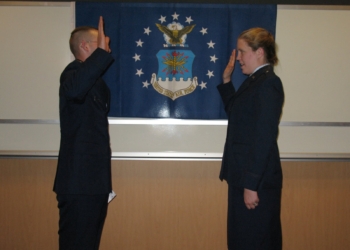Victor Siever listened to a speaker from Disabled American Veterans (DAV) during his Transition Assistance Program class in 2021. It was explained that DAV service officers not only help with filing Veterans Affairs’ disability claims, but they guide veterans every step of the way, even after a disability rating is received ― all for free.
Siever, a member of the Air Force then Air National Guard since 1982, was intrigued. He had watched friends attempt the maze of VA forms and regulations by themselves, and the results hadn’t been pretty.
“I’ve talked to people who’ve tried it on their own, and there is a lot to learn,” Siever said. “You’ve got to know all the forms, when to submit ― it’s a whole process that can be confusing, long, frustrating and aggravating.”
He took those examples and marched in the other direction, right toward the office of DAV’s Greater Little Rock chapter in Arkansas.
With approximately 1,900 local chapters nationwide, DAV service officers stay busy helping clients like Siever with their VA claims. Marine veteran Carmen McGinnis, a DAV officer in Colorado, has one message for them: don’t do it alone.
RELATED: Service officers help with ‘daunting’ task of filing VA claims
“There is help when it comes to filing VA claims, but there’s so much bad information out there,” she said. “I think a common misperception is that you can more easily file a claim by yourself and figure it out through blogs and forums.”
Yet McGinnis often spends her days undoing mistakes made by well-meaning, lone-wolf veterans in their claims process. It’s all added up to an unexpected passion for McGinnis and fellow DAV service officers: ensuring that veterans have all the assistance they need when navigating the bureaucracy of VA disability claims.
“To be a light in a fellow veteran’s story and be a safe place to walk them through this very confusing and frustrating process ― to me, it doesn’t feel like work at DAV,” she said. “It feels like paying it forward. I can tell them what I wish I had been told in my own claims process.”
What to know about filing claims
If you’re still active duty, you can file your disability claim with the VA up to 180 days before you separate. But the window never shuts on your ability to file a claim; McGinnis once helped a Korean War veteran increase his disability rating from 10% to 100%.
To get the process going ― even if you utilize a service organization like DAV ― you need to document. McGinnis recommends you spend your final months on active duty visiting your base clinic to verify any ailments with your medical providers. And if you received any treatment off base, including for areas like mental health, locate and obtain that documentation, too.
Knowing basic information like your dependents’ dates of birth, social security numbers and bank accounts also helps, McGinnis said. Make sure to call the local DAV chapter about a month before your separation date to get on their calendar, as they often get booked quickly. DAV officers can help with VA appeals, too, even if you didn’t use their services for your initial application.
“Even if you’re unsure, let’s have a conversation,” McGinnis said. “Even if you already have benefits in place, the laws are always changing. We are trained to help you cut through that bureaucracy.”









































